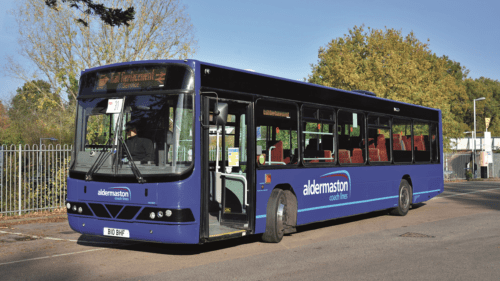
Following Richard Sharman’s look at Volvo’s early years in the UK market, Adrian Morton takes to the road with a few more classic examples of the manufacturer’s line-up
With Volvo reaching its 100th anniversary recently, I thought it only fitting to visit an operator which still runs several different variants of both bus and coach of the formidable Volvo B10M. I am sure many of you reading this article, particularly coach operators, would agree that the Volvo B10M earned the hearts of many for its resistance, reliability and driver appeal; I don’t think there’ll never be a vehicle quite like it ever again.
As Richard Sharman recounted in issue 1624, the Volvo B10M was a mid-engine city bus and coach chassis built between 1978 and 2002. It succeeded the Volvo B58 and was equipped with the same 9.6 litre horizontal engine mounted under the floor, immediately behind the front axle. Over the course of the decades in which it was produced, engine upgrades took place resulting in variants from a Mk1 to Mk4.
A number of different lengths were produced, a Volvo B10M-62 for example indicates it having a wheelbase of 62 decimetres, or 6.2 metres. Originally produced as a coach-only chassis it was later made available as a bus.
In bus form, the B10M with an Alexander PS Type body became the single-deck vehicle of choice for the Stagecoach Group, with many examples being delivered to fleets around the country between 1992 and 1998, the first examples going to Cumberland and the last significant order to Manchester.
A double-deck version of the B10M was developed firstly for Strathclyde PTE in 1981 and became known as the CityBus or D10M. The CityBus lasted until the end of B10M production but many customers had already jumped ship and were favouring the re-engineered Leyland Olympian, which became badged as a Volvo from 1993. The last was bodied by East Lancs in 2002 with dual purpose seating for municipally-owned Nottingham City Coaches.
[…]
By subscribing you will benefit from:
- Operator & Supplier Profiles
- Face-to-Face Interviews
- Lastest News
- Test Drives and Reviews
- Legal Updates
- Route Focus
- Industry Insider Opinions
- Passenger Perspective
- Vehicle Launches
- and much more!


